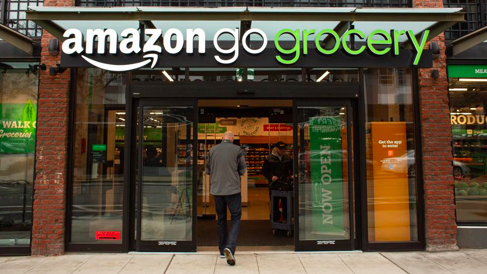There have been some major changes in grocery shopping throughout the last years. From cash to card to contactless payment, and from normal cashiers to self-checkout stations. But one thing remained the same: If you don’t check out, you’re a thief.
That may change in the future: In 2018, Amazon opened up its first Amazon Go store – A supermarket where you just pick up the things you’d like to buy and leave the store. When you enter, the Amazon Go app creates a barcode to let you enter the market. The underlying technology is similar to that of an autonomously driving car. Deep learning algorithms and sensors are used to identify which products you grabbed and are also reacting if you decide to put something back into the shelf (Thales, 2020). Right now, there are 27 stores across the US (in Chicago, New York, San Francisco and Seattle)(CNBC, 2019).
In my opinion, these kinds of stores will also come to Europe, sooner than later. It definitely enhances the convenience of the customer by being so time-saving. I can imagine the Netherlands to be the first ones to adapt this shopping concept, as Dutch supermarkets have also been proven to be very early adopters of concepts like self-checkout station or self-scanners. Next to that, Albert Heijn is already testing a similar store in Zaandam (Retail Detail, 2019).
http://https://www.youtube.com/watch?time_continue=15&v=ZYxz3kdmTHo&feature=emb_logo
On the other hand this might not be the only option, as the dependency on one app might be too big. Furthermore elderly people are left behind without having another option. Also, like in most technological innovations, data security is of course a major concern. Every little movement is being recorded and directly connected to you as a customer.
Do you think this is the future of retail? Will this be an addition or could this be fully replaced by traditional cashiers and self-checkout machines? Let me know in the comments.
Sources:
CNBC (2020). Amazon just opened a cashier less supermarket – Here are all the ways it’s trying to upend the grocery industry. Retrieved from https://www.cnbc.com/2020/02/25/how-amazon-is-trying-to-upend-the-grocery-industry.html
Retail Detail (2019). This is Albert Heijn’s anger to Amazon Go. Retrieved from https://www.retaildetail.eu/en/news/food/albert-heijns-answer-amazon-go
Thales (2020). How does Amazon Go, it’s checkout-free store, work? Retrieved from https://justaskthales.com/en/amazon-go-checkout-free-store-work/
Header photo: https://www.forbes.com/sites/enriquedans/2020/02/27/amazon-go-grocery-this-is-the-future-of-shopping-whether-we-like-it-ornot/#3d1db80cf6fa


